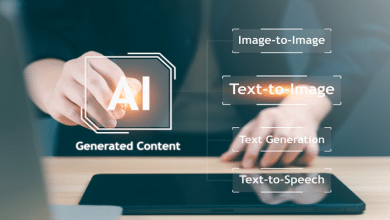
The legal profession demands precision, efficiency, and accuracy, especially when preparing essential documents. Modern litigation applications have redefined how professionals handle their workloads, addressing common pitfalls while streamlining processes. These solutions play a critical role in eliminating inefficiencies, fostering accuracy, and ensuring better outcomes.
Automating Drafting Processes
Automation eliminates the risk of human oversight by handling repetitive tasks with precision. Advanced litigation tools generate forms, agreements, and briefs based on preset templates, drastically reducing inconsistencies. This feature ensures that each output aligns with specified standards while allowing legal professionals to focus on higher-value tasks. Many tools also allow users to upload jurisdiction-specific templates, ensuring adherence to local procedural requirements.
Minimizing Manual Oversight
Errors often stem from manual data entry or formatting inconsistencies. Advanced software integrates smart review systems that identify discrepancies, from misaligned clauses to incorrect terminology. These systems ensure each document meets professional standards without requiring constant manual revisions. Features such as clause libraries enable users to pull pre-approved content, ensuring consistency across multiple drafts.
Maintaining Uniform Formatting
Standardization is critical in professional settings, and consistent formatting reflects expertise. Legal platforms ensure that every file adheres to specific stylistic guidelines, eliminating font, layout, or structure mismatches. Uniformity enhances credibility and reduces unnecessary revisions caused by formatting issues. Advanced tools can also apply predefined court filing formats, ensuring compliance with jurisdictional requirements.
Tracking Edits Efficiently
Litigation software incorporates robust tracking capabilities that allow teams to manage edits seamlessly. Version control highlights changes, ensuring every update is clearly documented. This minimizes confusion during collaborations and prevents the accidental use of outdated drafts. Built-in audit trails provide a comprehensive history of who made changes and when they were applied. These features also make revert to previous versions easier, preserving original content when necessary.
Streamlining Workflow Management
Managing multiple deadlines and responsibilities can increase the likelihood of mistakes. Modern platforms integrate scheduling and task management features to ensure every part of the preparation process stays organized. Automated alerts notify users of pending actions, reducing delays and last-minute errors.
Integrated dashboards provide an overview of ongoing tasks, enabling better resource allocation. Workflow templates can also be customized to accommodate unique case requirements, ensuring tailored task management.
Avoiding Discovery-Phase Missteps
The discovery phase is often complex, requiring thorough review and preparation of evidence. Litigation software simplifies this by organizing materials and flagging missing information. This ensures compliance with court requirements while maintaining accuracy and reducing the likelihood of errors. Optical Character Recognition (OCR) tools embedded in these systems can extract relevant text from scanned documents, improving searchability.
Enhancing Collaboration Between Teams
Collaboration often presents challenges, especially when multiple professionals handle the same case. Digital solutions provide centralized platforms where teams can work together efficiently. Shared access to files reduces communication gaps, ensuring accuracy across all collaborative efforts.
Secure user permissions prevent unauthorized access, ensuring sensitive information is protected. Additionally, real-time syncing ensures that all users view the most updated version of every document.
Improving Compliance and Consistency
Adherence to regulatory standards is vital in legal practice. Many solutions incorporate built-in compliance checks that identify potential deviations from legal requirements. This minimizes risks associated with errors and ensures all prepared files remain valid and enforceable. AI-powered systems can cross-reference current legislation to confirm that citations are accurate and up-to-date.
Effective and reliable litigation tools let professionals transform how they approach their work by ensuring accuracy, consistency, and efficiency in every step of document preparation. With features that address common pitfalls, these solutions empower teams to handle their responsibilities with confidence and precision.





